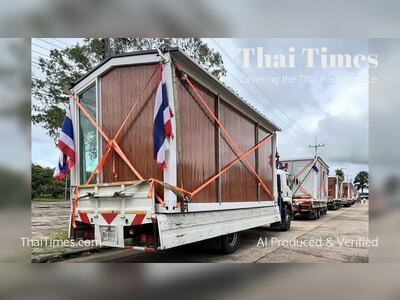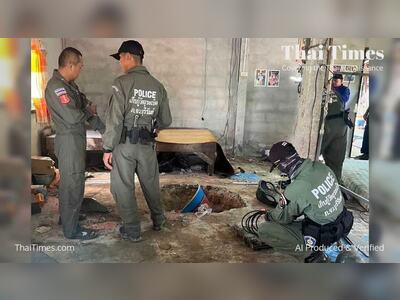Bangkok Liveability Index 2024 Reveals Varied Living Conditions Across Districts
Phra Nakhon tops the rankings while Nong Khaem is identified as the least livable district.
A new report, the Bangkok Index 2024, developed by Rocket Media Lab, has assessed the liveability of Bangkok’s 50 districts based on a comprehensive evaluation of environmental and well-being factors.
The initiative aims to provide insights into the quality of life in the city, revealing significant variations in living standards tied to issues such as public services, economic inequality, and environmental conditions.
The Bangkok Index employs a structured methodology that categorizes liveability into four primary areas: Public Services, Economy, Well-Being, and Environment.
Each of these categories is further divided into four sub-categories, allowing for a detailed examination of factors such as public health, education, transport, district budgets, crime rates, waste management, and air quality.
In the latest assessment, Phra Nakhon district emerged as the most liveable area, achieving an average score of 35.08 out of a possible 50.
This district was particularly notable for its economic performance, scoring 41.56 points, which reflects a robust district budget and a high density of food establishments.
Other districts ranking high in liveability include Pom Prap Sattru Phai (35.05), Pathum Wan (34.76), Samphanthawong (33.42), and Ratchathewi (32.40).
Conversely, Nong Khaem was identified as the least livable district, with an average score of 13.81.
Its performance in public services was significantly low at 8.31 points, indicating deficiencies in educational resources, public health facilities, and transport infrastructure.
Following Nong Khaem in the rankings were Bang Khae (16.76), Sai Mai (17.47), Bang Khun Thian (18.13), and Thung Khru (19.55).
The analysis underscores a broader trend where districts with higher liveability scores are generally situated in inner Bangkok, which benefits from greater economic resources and infrastructure.
In contrast, districts with lower scores are often located in the outer and middle segments of the city, reflecting a disparity in resource allocation and public service availability.
The report also highlights specific areas of concern, identifying the ten districts facing the most significant environmental challenges.
These include Bang Na, Wang Thonglang, Bang Rak, Din Daeng, Khlong Toei, Pathum Wan, Khlong San, Watthana, Yannawa, and Bang Phlat.
Additionally, the report points out the ten districts with the poorest well-being, which comprise Chatuchak, Wang Thonglang, Bang Kapi, Bang Khun Thian, Bang Khae, Thung Khru, Lat Phrao, Nong Khaem, Bang Na, and Bueng Kum.
This index serves as a vital tool for policy-making and addressing local challenges, contributing to the ongoing discourse surrounding urban development and quality of life in Bangkok.
The initiative aims to provide insights into the quality of life in the city, revealing significant variations in living standards tied to issues such as public services, economic inequality, and environmental conditions.
The Bangkok Index employs a structured methodology that categorizes liveability into four primary areas: Public Services, Economy, Well-Being, and Environment.
Each of these categories is further divided into four sub-categories, allowing for a detailed examination of factors such as public health, education, transport, district budgets, crime rates, waste management, and air quality.
In the latest assessment, Phra Nakhon district emerged as the most liveable area, achieving an average score of 35.08 out of a possible 50.
This district was particularly notable for its economic performance, scoring 41.56 points, which reflects a robust district budget and a high density of food establishments.
Other districts ranking high in liveability include Pom Prap Sattru Phai (35.05), Pathum Wan (34.76), Samphanthawong (33.42), and Ratchathewi (32.40).
Conversely, Nong Khaem was identified as the least livable district, with an average score of 13.81.
Its performance in public services was significantly low at 8.31 points, indicating deficiencies in educational resources, public health facilities, and transport infrastructure.
Following Nong Khaem in the rankings were Bang Khae (16.76), Sai Mai (17.47), Bang Khun Thian (18.13), and Thung Khru (19.55).
The analysis underscores a broader trend where districts with higher liveability scores are generally situated in inner Bangkok, which benefits from greater economic resources and infrastructure.
In contrast, districts with lower scores are often located in the outer and middle segments of the city, reflecting a disparity in resource allocation and public service availability.
The report also highlights specific areas of concern, identifying the ten districts facing the most significant environmental challenges.
These include Bang Na, Wang Thonglang, Bang Rak, Din Daeng, Khlong Toei, Pathum Wan, Khlong San, Watthana, Yannawa, and Bang Phlat.
Additionally, the report points out the ten districts with the poorest well-being, which comprise Chatuchak, Wang Thonglang, Bang Kapi, Bang Khun Thian, Bang Khae, Thung Khru, Lat Phrao, Nong Khaem, Bang Na, and Bueng Kum.
This index serves as a vital tool for policy-making and addressing local challenges, contributing to the ongoing discourse surrounding urban development and quality of life in Bangkok.











